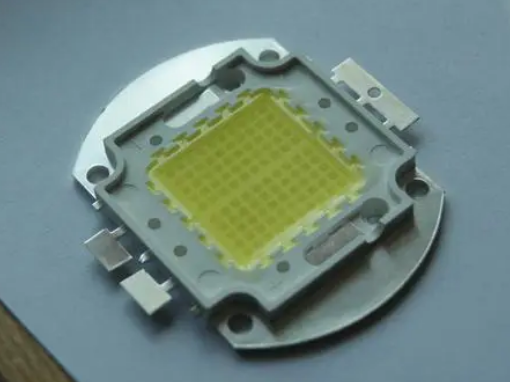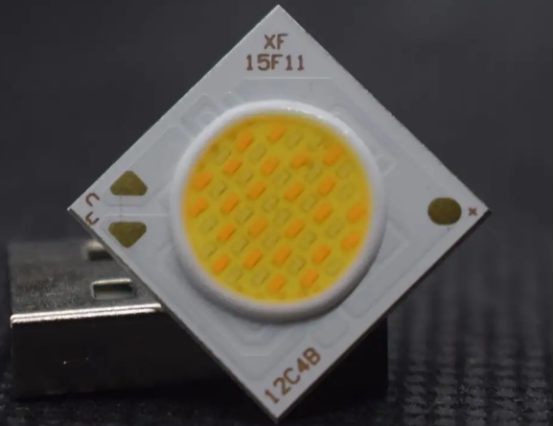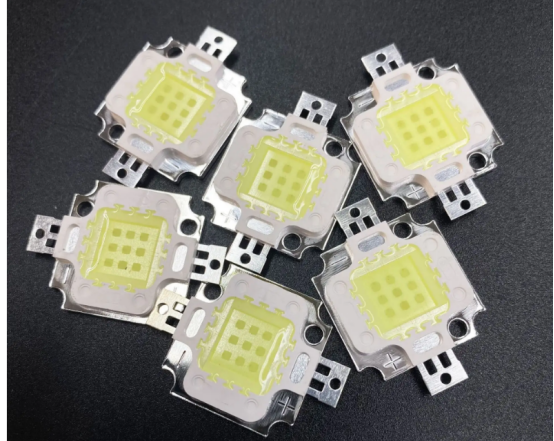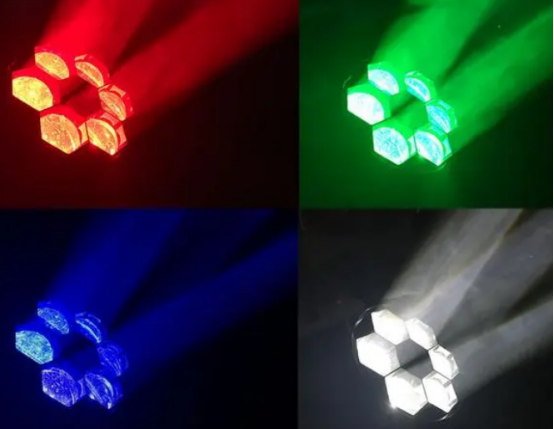What is an LED chip?
If you are familiar with LED lighting, you may have heard of the term "LED chip" before. An LED chip is a direct-emitting electronic component. In simple terms, an LED chip is a small panel of LEDs. LEDs are tiny, and when they are grouped together, they create bright and intense light patterns. One of the characteristics of a diode is that it conducts current in one direction while blocking current flow in the other direction. It acts as an electronic check valve. The conducting direction is called the forward direction, and the blocking direction is called the reverse direction. Similarly, in the forward direction of a diode, current will only flow when the voltage across the diode reaches a certain threshold.

Colors emitted by LED chips
The color emitted by an LED depends on the semiconductor material it is made of and the voltage applied across the diode. The term RGB stands for red, green, and blue. RGB LED chips can mix these colors to create a variety of colors. The colors that can be emitted include orange, yellow, purple, and light blue. Many LED light strips employ RGB technology.
When the term RGBW or RGBWW is used, additional LED chips are added to the RGB chip. The additional chips are in warm white or cool white. If the chip is cool white, a W (white) is added to RGB. Therefore, the term RGBWW represents RGB plus WW (warm white). An additional chip with warm white is then added to the RGB chip.

Which LED chip is the best?
LEDs such as 3528, 5050, 2835, and 5630 are not different types of chips - they are just different sizes. Each has its own specifications, power requirements, and output brightness. The best choice depends on what suits your project best.
Explaining the 3528 SMD LED chip
The 3528 SMD chip measures 3.5mm x 2.8mm, which is smaller than the 5050 LED strip SMD chip. You often see 3528 chips on 12V LED light strips, with a power consumption of 4.8 watts (also called 4.8wp/m or 5w p/m LED light strip) and 60 SMD per meter.
These strip lights output approximately 330-360 lumens per meter, depending on the color (equivalent to a 40-watt halogen lamp), which is enough to produce a smooth and bright effect when illuminating any surface.
InStyle offers red, green, blue, amber, as well as warm white and cool white 3528 SMD as standard colors. (We can also provide custom products with other white color temperatures.)
The 3528 60 SMD p/m LED light strip is commonly used for accent lighting in homes, bars, restaurants, hotels, and other places, such as under-cabinet lighting or cove lighting.
Although less common than the standard 60 SMD p/m LED light strip, the 3528 SMD is also used on LED light strips with 120 chips per meter. These strips have a power of 9.6 watts (called 9.6wp/m or 10w p/m LED light strip) and offer the same color range. The light output is exactly twice that of the 60 SMD p/m tape (as they have twice the number of LEDs), resulting in approximately 660-720 lumens per meter, depending on the color.

The 3528 120 SMD p/m LED light strip is used for the same type of accent lighting applications as its standard counterpart. We recommend using them in places with higher ambient light where the required brightness exceeds what the 4.8wp/m strip can provide.
The cutting intervals for our 60 SMD 3528 LED light strip are 50mm, and for the 120 SMD p/m tape, it is 25mm. Both types are available in waterproof versions (IP67-rated).
Other types of chips follow a similar pattern.
Factors affecting the quality of LED chips
1. Bracket: LED brackets in the market are mainly of two types: PCT and EMC. Generally, for outdoor lighting fixtures that operate at higher temperatures, EMC brackets are used. Using non-heat-resistant PCT brackets in high-temperature environments can cause chip failures and prevent them from lighting up.

2. Glue: The importance of glue should not be underestimated. Glue serves the purpose of fixing and protecting components. Without glue or with poor-quality glue, the components cannot be properly connected.
3. Chip leads: In the early days, gold wire was used for chip leads due to its high melting point and good ductility. However, the cost of pure gold is high. To ensure both conductivity and cost reduction, many suppliers choose to use alloy wires. However, we do not recommend using copper wire for LED chips because copper wire has poor conductivity and a lower melting point than gold.
4. Utilization of LED chips: If we use LEDs at 100% capacity (maximum), their lifespan will undoubtedly be greatly reduced. Therefore, when designing luminaires, it is advisable to adhere to the principle of using only 60%-80% of the LED chips. This helps ensure the quality and lifespan of the entire luminaire.
I hope this article will give you a deeper understanding of LED chip light . I am your editor from TCWIN, guiding you on the road to lighting.
![]() pkgled
LEDSMDBEADS
release time:2023-12-06 16:24:32
Reading volume:1
pkgled
LEDSMDBEADS
release time:2023-12-06 16:24:32
Reading volume:1



